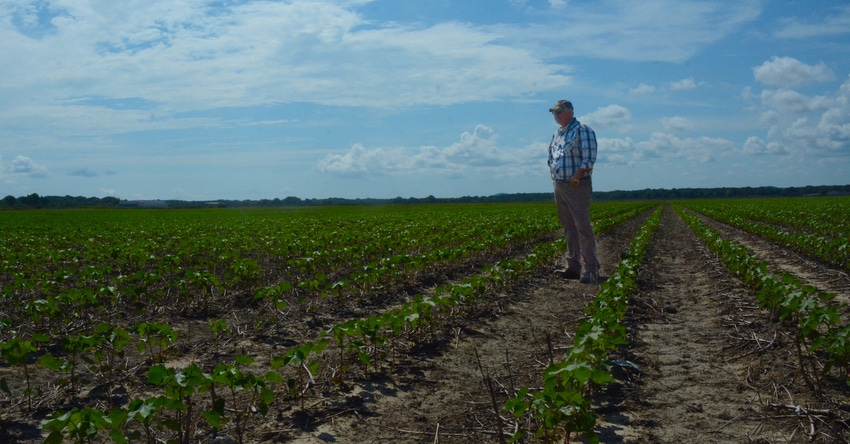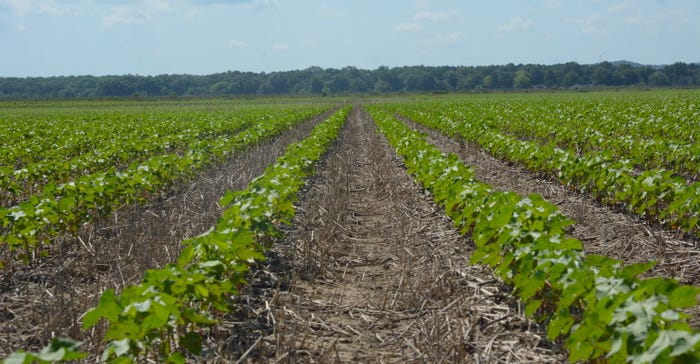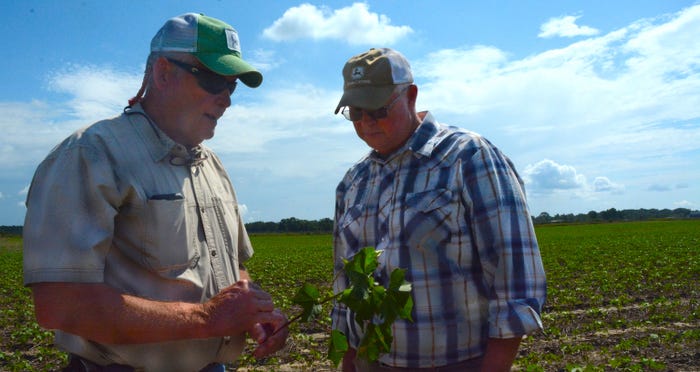
Coley Bailey loves planting season.
“I love getting the crop ready. I wake up every morning wanting to go to work,” he said.
Despite his enthusiasm, 2021 didn’t provide the easiest planting conditions for this Mississippi cotton grower who farms in Grenada, Yalobusha and Montgomery counties. A cold and wet spring pushed planting back to May 18. Most years he’s finished planting cotton by that date.
Then he lost 200 acres to flooding — 175 when Grenada Lake rose eight feet, and another 25 when the Yalobusha River backed out.
But as he walks one of his cotton fields with us at the end of June, he seems optimistic — particularly about the field we’re standing in.
“This is one of the healthiest fields we have,” Bailey said.
“Better than expected”
Bailey, a Deltapine NPE grower, is part of the stewarded Ground Breakers Field Trial Program where select growers are evaluating Bayer’s ThryvOn Technology on a large scale. Even though Bailey has followed the promising university research trials for this biotech trait’s thrips control, he was still surprised by its performance on his farm.

“It’s really better than I expected,” Bailey said. “It had a lot of thrips pressure and absolutely zero damage, where a lot of the nearby cotton received damage from thrips.”
Bayer is working with select growers across the Cotton Belt to evaluate ThryvOn on a stewarded scale and develop a larger body of data before moving to the full commercial stage. If there was ever a year to test the efficacy for thrips control it was this one. Many Midsouth cotton acres were emerging as thrips populations peaked. Wet weather also prevented producers from getting back in the field to make timely foliar applications.
Keylon Gholston, Deltapine cotton product manager, has traveled the region evaluating on-farm ThryvOn trials. Thanks to high thrips pressure, he says he has seen a huge difference in ThryvOn and non-ThryvOn cotton.
“Thrips aren’t hard to kill,” said Gholston, “but the problem we get into is a lot of times at that time of year, it’s wet and raining, and we can’t be timely. Or, we’re trying to get done planting, and in today’s world most farmers don’t have enough labor to carry out planting and spraying at the same time. So, a grower has either got to quit planting and go spray for thrips, or he’s got to say ‘I’m going to let the thrips eat the cotton until I’m done planting.’”
“What this technology has the potential to do is take that out of the picture. It’s going to allow growers to start planting, finish planting and not be as concerned about thrips pressure,” Gholston added.
“That first 40 days is so important to the root structure of cotton and how it handles any adversity the rest of the year,” Bailey said. “If you start out with a weaker stand, it seems it just doesn’t recover.”
“It’s early to tell, but looking at what we’re doing right now, I like the technology. I like the ease and the peace of mind in knowing that even if there are thrips out there, I’m not concerned. They’re not bothering me, and we’re not checking the cotton every three days to make sure we’re not missing some,” Bailey said.

Plant bugs
While ThryvOn had passed Bailey’s test for thrips management, at the time of our visit to his farm (June 30), he had not seen plant bug pressure start to build. But he expected high populations to arrive soon.
“This is a plantbug hotspot,” Bailey said as he points out a neighboring hay field. “As they cut hay and there’s not much for the plant bugs to feed on, they’ll move to cotton. We fight everything in this field a little more than the others, and I figure, if you’re going to test it, put it in a good place.”
Bailey typically makes three plant bug sprays per year. Gholston says it’s unlikely the technology will eliminate the need for all of them.
“Are you going to have to spray it for plant bugs? Yes, I think you will. But the great thing is you’re getting sub-threshold protection every day. If you think about it, if we just protect two squares and turn them into bolls that’s a lot of cotton,” Gholston said.
Bailey is hopeful the protection turns to measurable pounds when it’s time to harvest.
“I’m excited about the technology and the benefits it has for us for sure. Of course, farmers’ expectations are tied to yield and we’ll see what happens at the end of the season.”
About the Author(s)
You May Also Like






